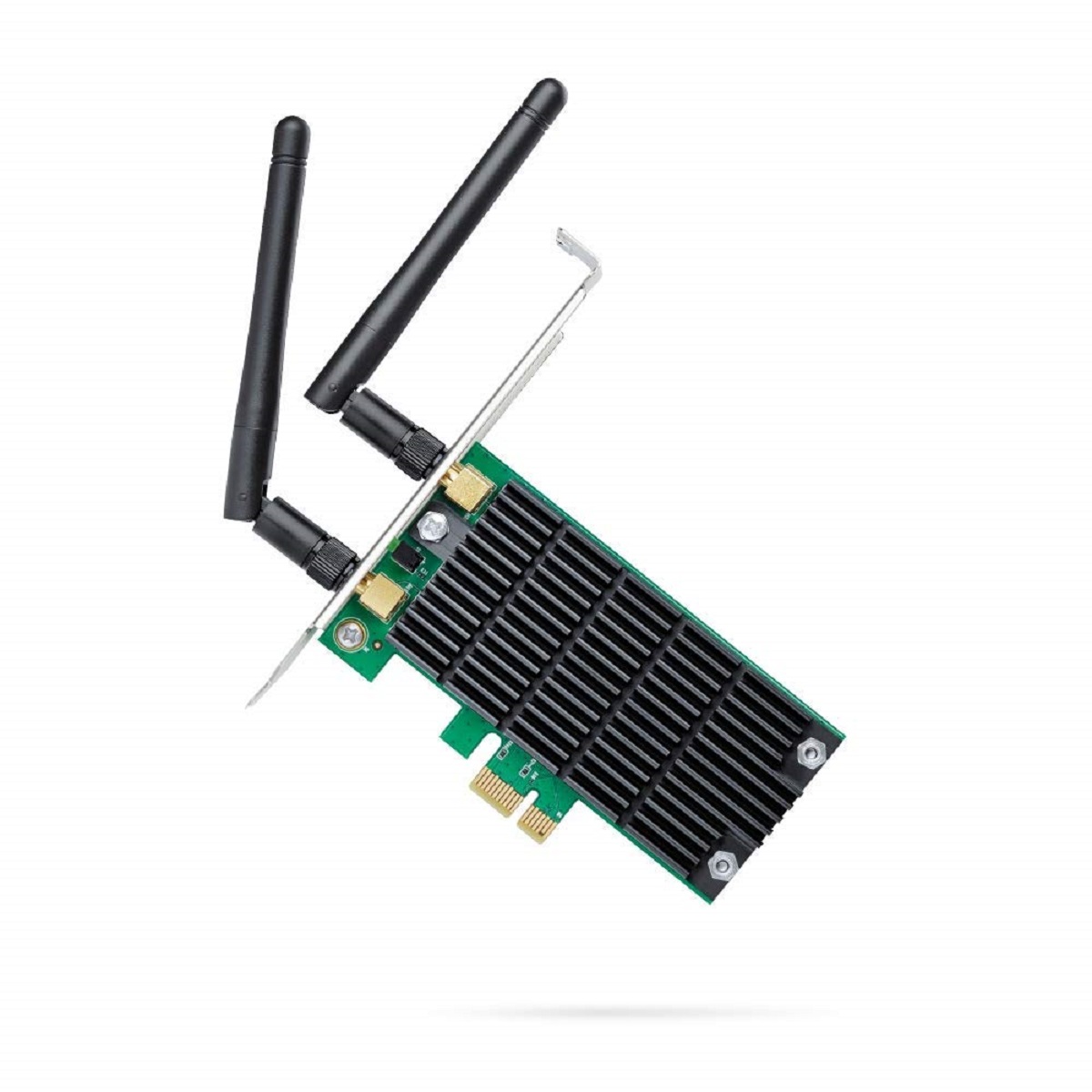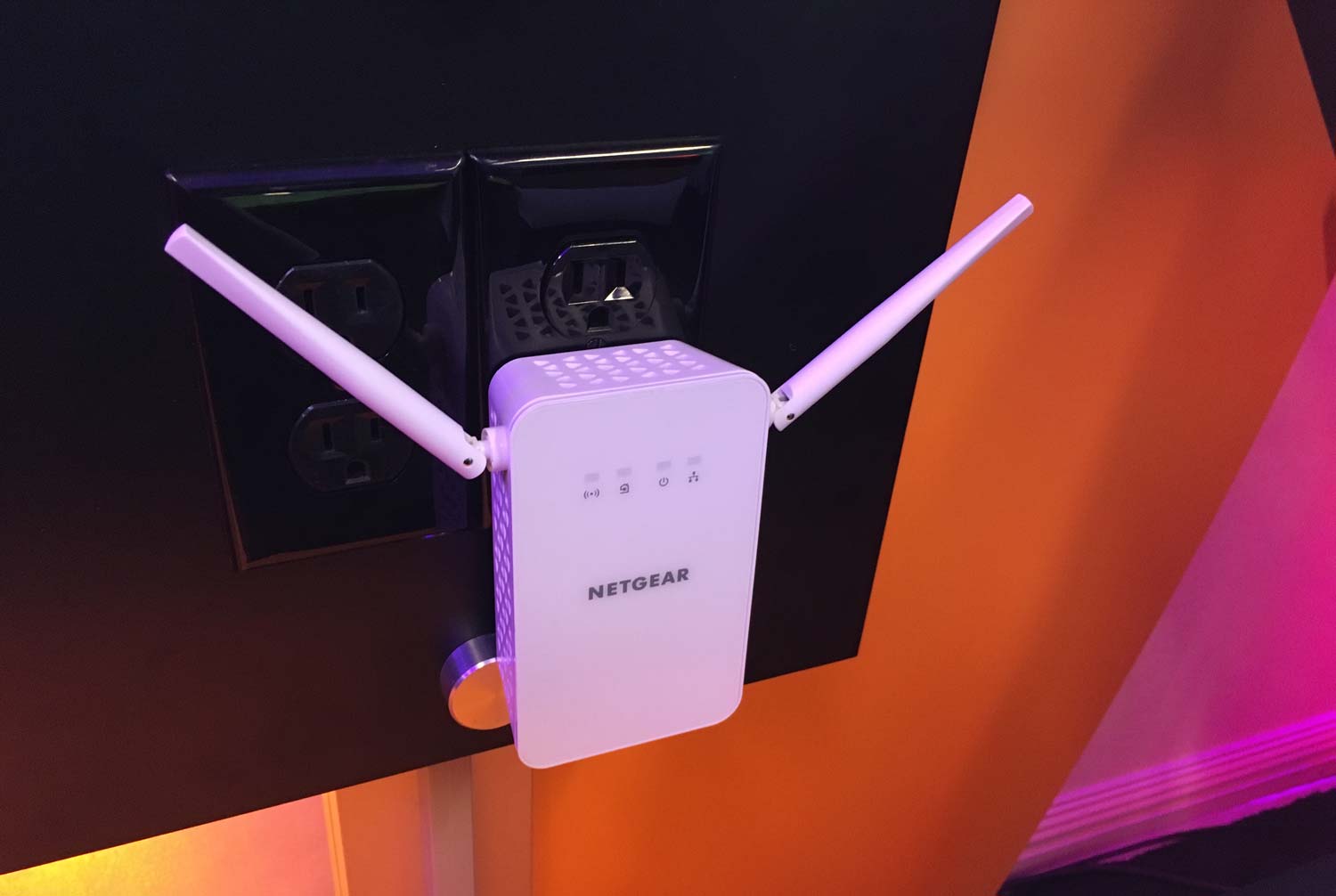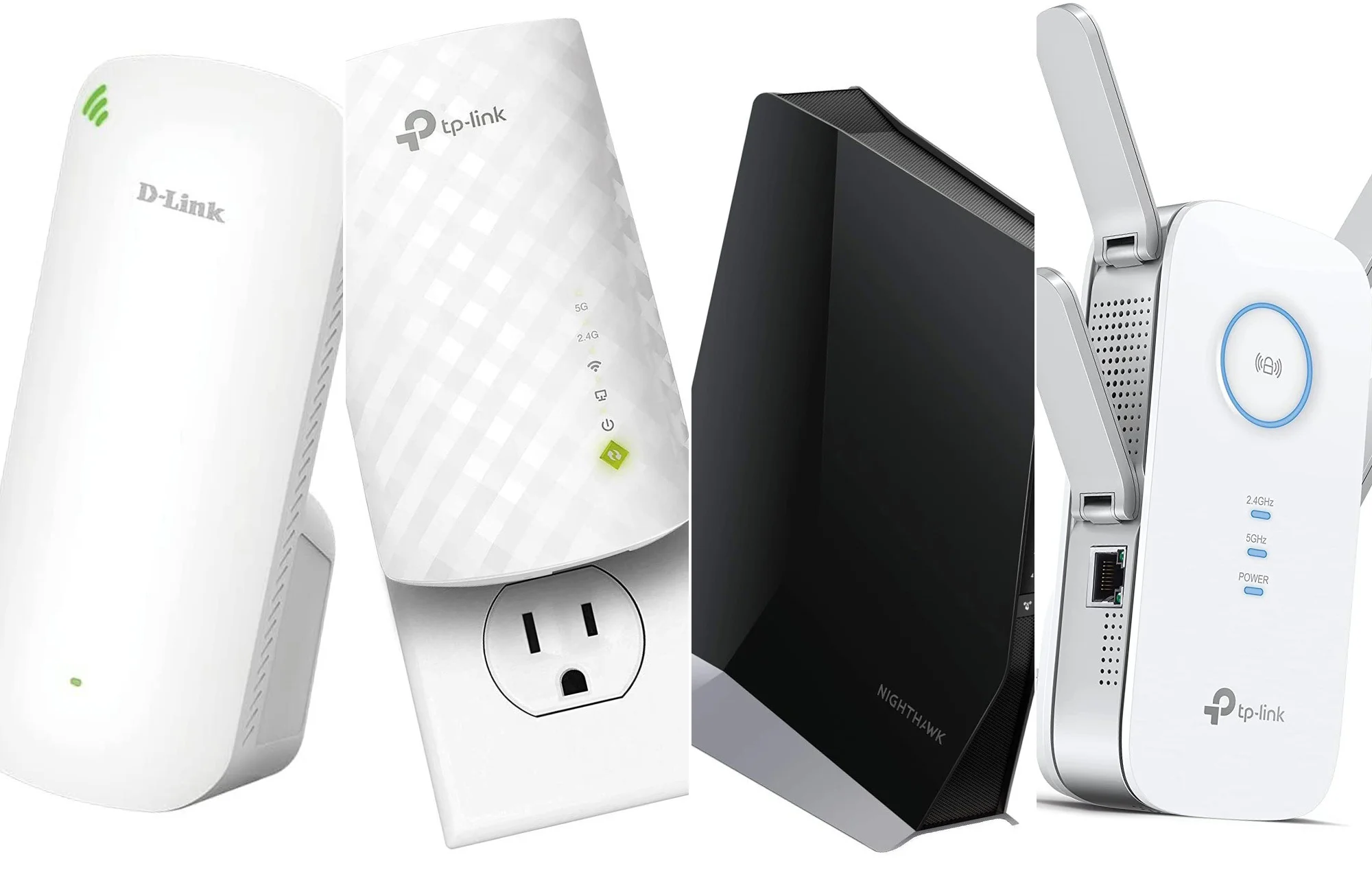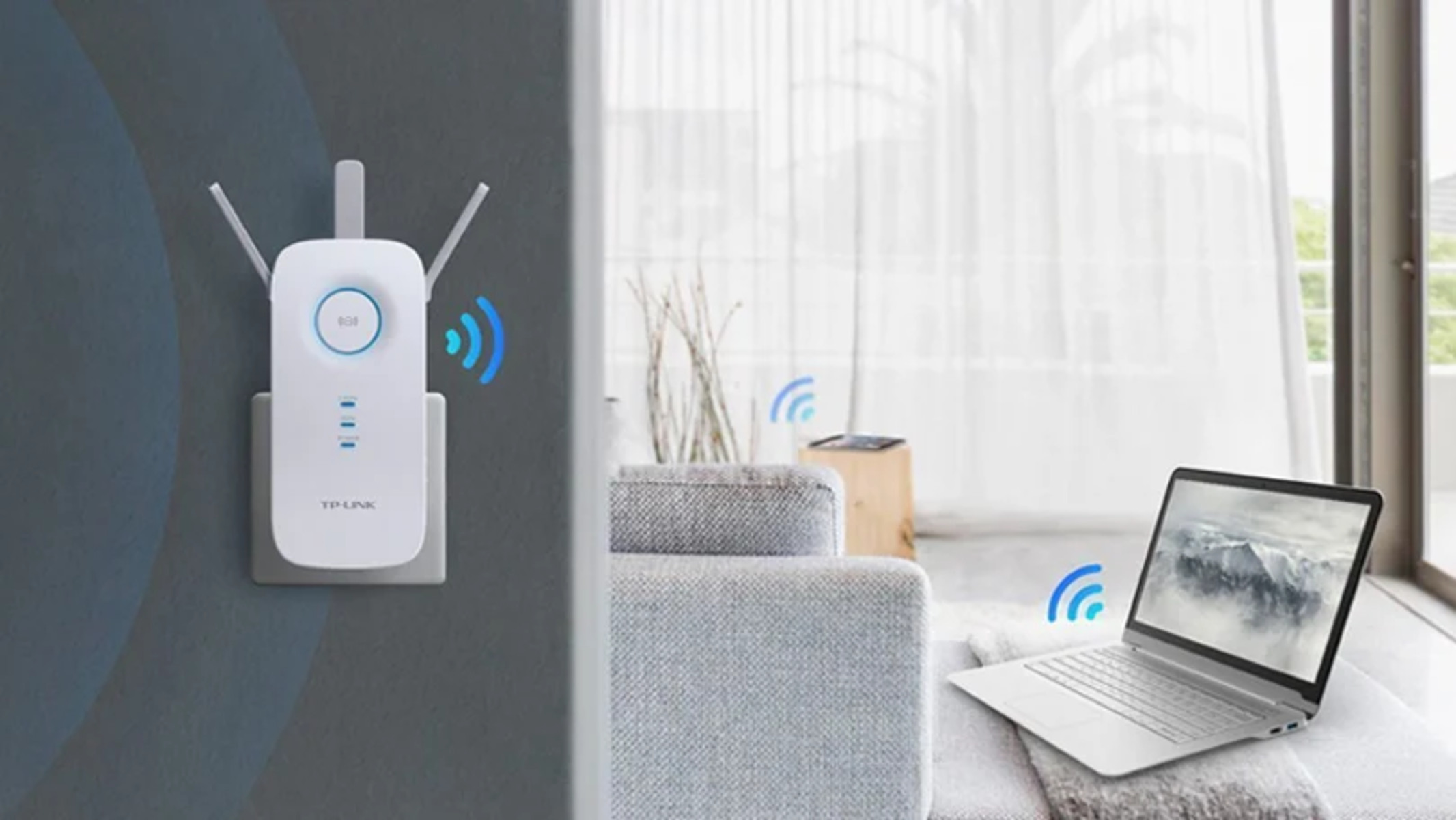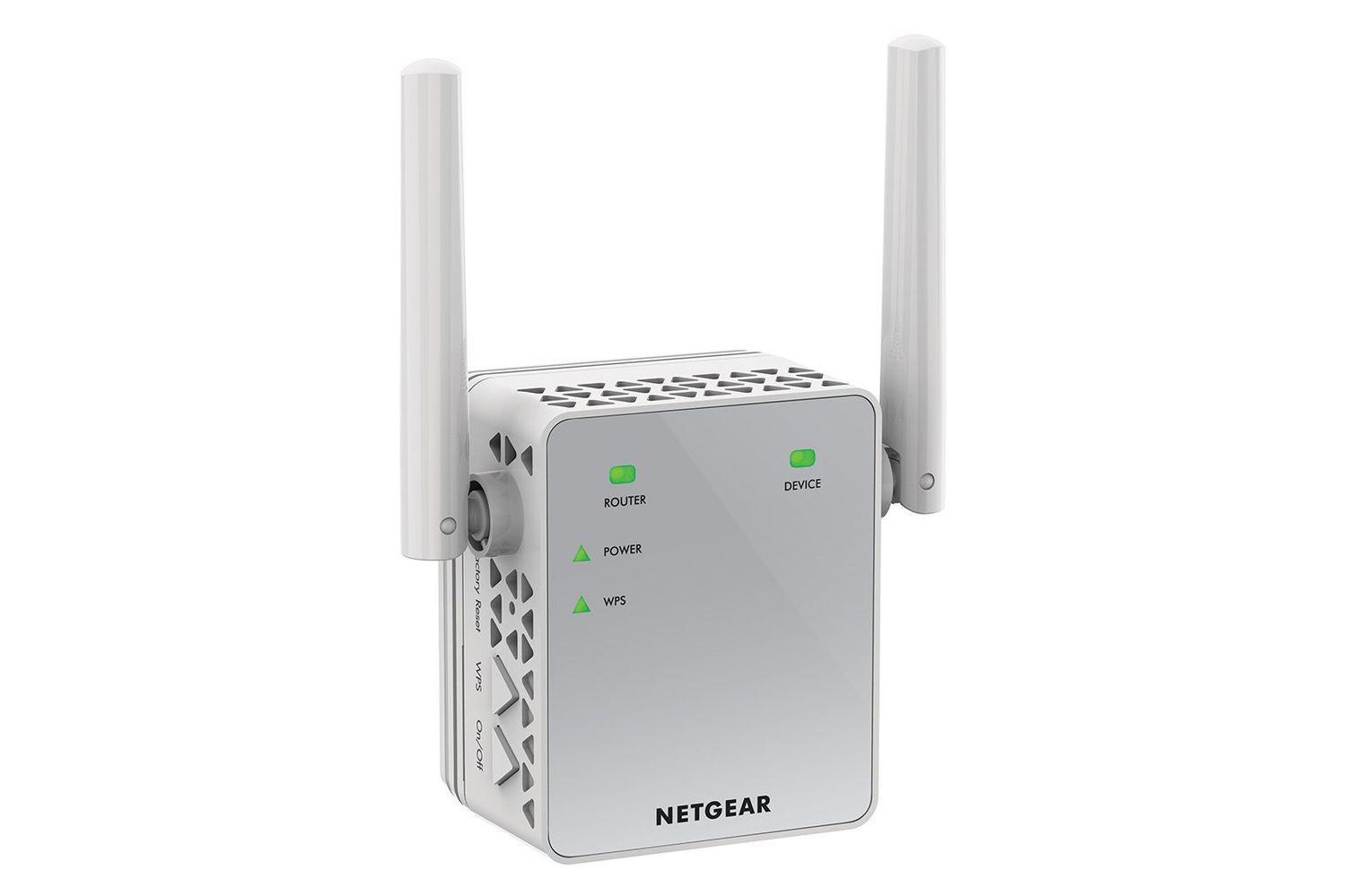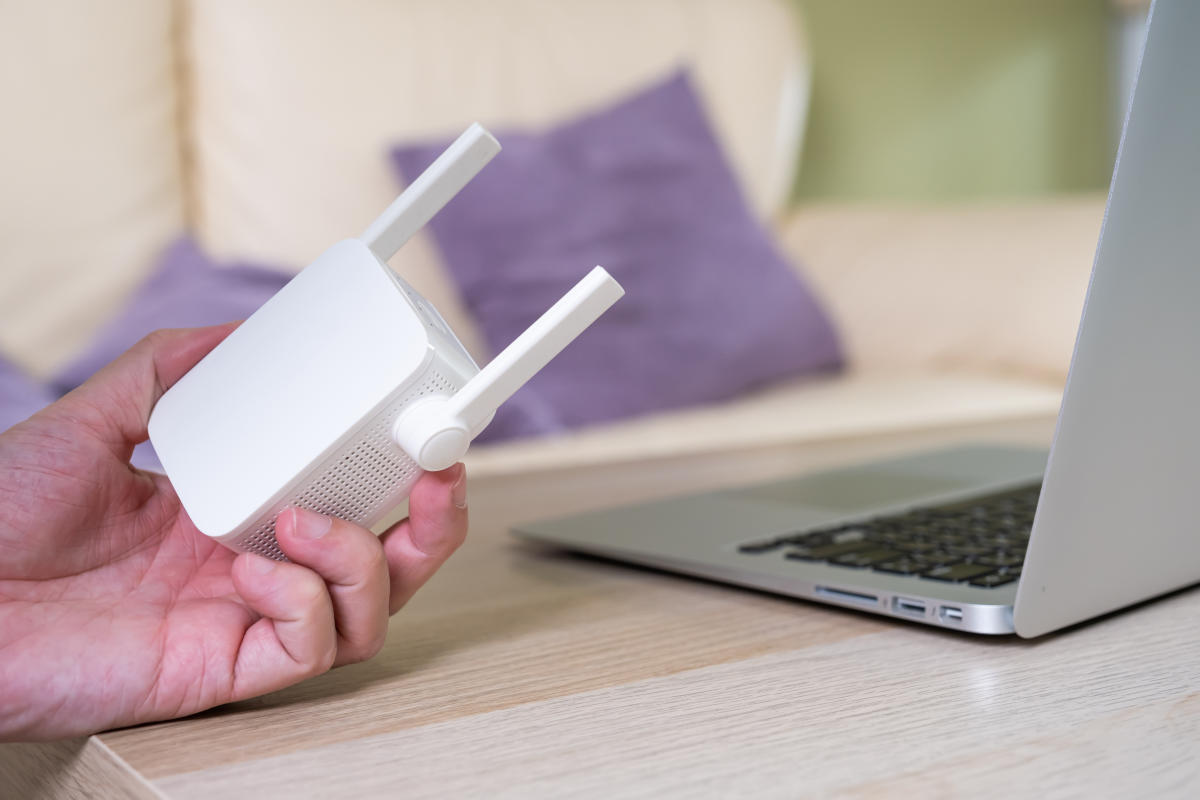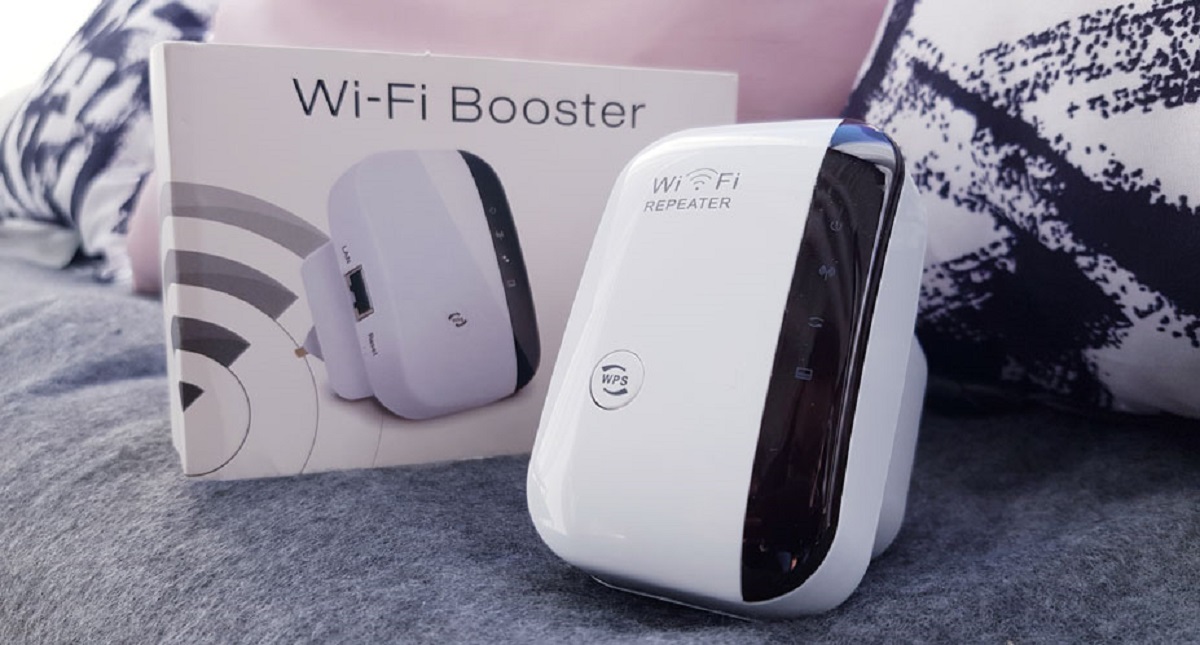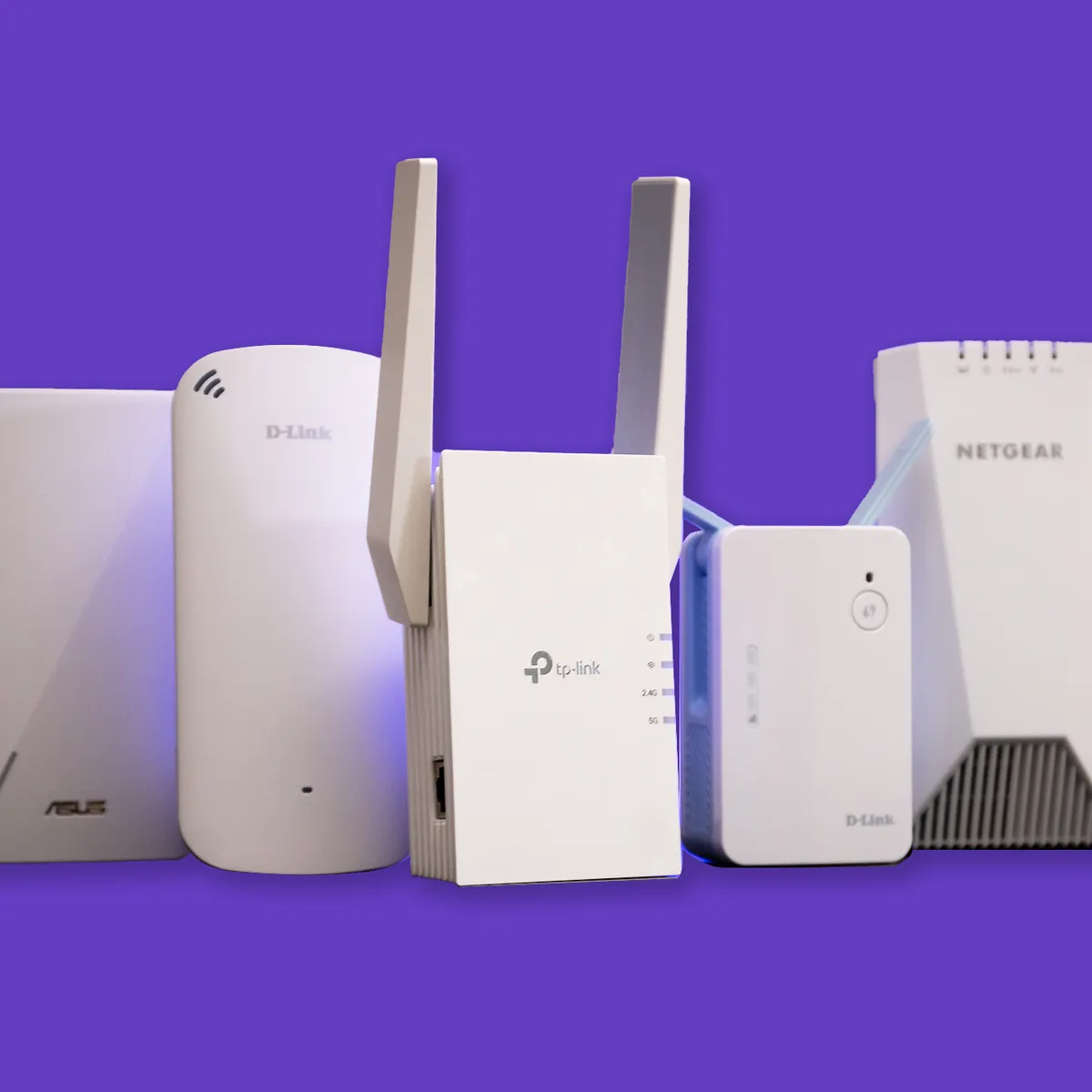Introduction
Welcome to this guide on how to increase your Wi-Fi speed! In today’s highly connected world, a fast and reliable internet connection is essential for our daily activities – from streaming movies to working remotely. Slow Wi-Fi speeds can be frustrating, but fear not! With a little know-how and a few simple tweaks, you can improve your Wi-Fi speed and enjoy faster internet browsing and data transfer.
Whether you’re experiencing slow Wi-Fi speeds at home or in the office, this comprehensive guide will walk you through the steps to optimize your Wi-Fi performance. From finding the best location for your router to upgrading your equipment, we’ll cover everything you need to know.
Before we dive into the details, it’s worth mentioning that Wi-Fi speed can be affected by various factors, such as the distance between your device and the router, signal interference, and outdated equipment. By taking the time to address these issues, you’ll be well on your way to boosting your Wi-Fi speed and enjoying a smoother online experience.
In the following sections, we’ll walk you through each step of the process, providing clear instructions and helpful tips along the way. By the end of this guide, you’ll have a better understanding of how to optimize your Wi-Fi network and achieve faster internet speeds.
Remember, improving your Wi-Fi speed is not a one-size-fits-all solution. Depending on your specific circumstances and equipment, you may need to implement multiple solutions to maximize your Wi-Fi performance. So, let’s get started with the first step: finding the best location for your router.
Step 1: Find the Best Location for Your Router
Choosing the right location for your Wi-Fi router is crucial for optimal signal strength and coverage. Here are some key factors to consider when finding the best spot:
1. Centralize: Place the router in a central location within your home or office. This helps to distribute the Wi-Fi signal evenly, ensuring that all areas receive adequate coverage. Avoid placing the router near walls or in corners, as this can interfere with the signal.
2. Avoid Obstacles: Keep the router away from physical obstructions such as thick walls, metal objects, and large appliances. These obstructions can weaken the signal and reduce Wi-Fi speed. Try to keep the router elevated and away from cluttered areas to minimize interference.
3. Distance from Devices: Consider the proximity of your devices to the router. If you have devices primarily in one area, such as an entertainment center or workspace, it may be beneficial to position the router closer to those devices. This helps to ensure a strong and stable connection.
4. Interference Factors: Be mindful of potential sources of interference such as cordless phones, baby monitors, microwave ovens, and neighboring Wi-Fi networks. These devices operate on similar frequencies and can disrupt the Wi-Fi signal. Keep the router away from these sources or consider using the router’s settings to switch to a less congested channel.
5. Experiment and Test: Finding the ideal location for your router may require some trial and error. Consider moving the router around and running speed tests to determine the impact on signal strength and Wi-Fi speed. Additionally, there are smartphone apps available that can help you identify areas with weak Wi-Fi coverage.
By following these guidelines, you’ll be able to find the best location for your router and optimize Wi-Fi performance. Once you have found the ideal placement, you can move on to the next step: strengthening your Wi-Fi network’s security with a strong password.
Step 2: Use a Strong Password for Your Wi-Fi Network
Securing your Wi-Fi network with a strong password is essential to prevent unauthorized access and ensure that only approved devices can connect. Follow these tips to create a strong Wi-Fi password:
1. Length and Complexity: Choose a password that is at least 12 characters long and includes a combination of uppercase and lowercase letters, numbers, and special characters. Avoid using easily guessable information such as your name, birthdate, or address.
2. Unique and Random: Create a password that is unique to your Wi-Fi network and avoid using the same password for other accounts. Consider using a password manager to generate and store complex passwords securely.
3. Regularly Update: Change your Wi-Fi password periodically, ideally every few months. This practice reduces the risk of someone unauthorized gaining access to your network.
4. Share Carefully: Be cautious when sharing your Wi-Fi password with others. Avoid broadcasting it in public or sharing it with individuals you don’t trust. Consider setting up a guest network for visitors instead.
Using a strong password adds an extra layer of security to your Wi-Fi network, safeguarding it from potential intruders. However, securing your network does not end with a strong password. In the next step, we will explore additional measures to protect your Wi-Fi network from unauthorized access.
Step 3: Secure Your Network from Unauthorized Access
In addition to using a strong password, there are several measures you can take to enhance the security of your Wi-Fi network and prevent unauthorized access:
1. Enable Network Encryption: Ensure that your Wi-Fi network is encrypted using WPA2 (Wi-Fi Protected Access 2). This encryption method provides the highest level of security and prevents eavesdropping on your network traffic. Avoid using outdated encryption protocols like WEP (Wired Equivalent Privacy), as they are more vulnerable to attacks.
2. Disable Remote Management: Disable the remote management feature on your router to prevent unauthorized users from accessing its settings remotely. This feature is often enabled by default and can be a potential security risk.
3. Use MAC Address Filtering: Enable MAC address filtering on your router to restrict access to only approved devices. Every network adapter has a unique MAC address, and by adding the MAC addresses of your devices to the router’s allowed list, you can ensure that only those devices can connect to your network.
4. Disable SSID Broadcasting: By disabling the broadcasting of your Wi-Fi network’s SSID (Service Set Identifier), you make it less visible to potential attackers. Although this does not provide foolproof security, it adds an extra layer of protection by keeping your network name hidden from casual Wi-Fi scanners.
5. Update Firmware Regularly: Keep your router’s firmware up to date by checking for updates from the manufacturer’s website. Firmware updates often include security patches that fix vulnerabilities and protect your network from emerging threats.
Implementing these security measures significantly reduces the risk of unauthorized access to your Wi-Fi network. However, it’s important to remember that no security measure is completely foolproof. In the next step, we will focus on updating your router’s firmware to ensure optimal performance and security.
Step 4: Update Your Router’s Firmware
Regularly updating your router’s firmware is essential for maintaining its performance, stability, and security. Firmware updates often include bug fixes, performance enhancements, and security patches. Here’s how you can update your router’s firmware:
1. Check for Updates: Visit the manufacturer’s website or the router’s admin interface to check for available firmware updates. Look for a “Support” or “Downloads” section where you can find the latest firmware version for your specific router model. Download the firmware file to your computer.
2. Backup Settings: Before proceeding with the firmware update, it’s a good idea to back up your router’s current settings. This allows you to restore your settings in case anything goes wrong during the update process. Refer to your router’s user manual or the manufacturer’s website for instructions on how to backup and restore settings.
3. Update Firmware: Access your router’s admin interface by typing its IP address into your web browser. Look for the “Firmware Update” or “Router Update” section. Here, you’ll usually find an option to upload the firmware file you downloaded earlier. Select the file and follow the on-screen instructions to initiate the firmware update process.
4. Be Patient: During the firmware update, it’s important to remain patient and avoid interrupting the process. Depending on your router model and the size of the firmware file, the update may take a few minutes. Avoid power outages or unplugging the router during the update, as this can cause irreversible damage to the device.
5. Verify the Update: Once the firmware update is complete, restart your router and verify that the new firmware version has been installed. Access the router’s admin interface again and check for any notifications indicating a successful update.
By regularly updating your router’s firmware, you ensure that it stays up to date with the latest security patches and performance improvements. This helps to protect your network from vulnerabilities and ensures that your Wi-Fi speed remains optimized.
In the next step, we’ll dive into optimizing your router’s settings to further enhance your Wi-Fi speed and performance.
Step 5: Optimize Your Router’s Settings
To get the most out of your Wi-Fi network, it’s important to optimize your router’s settings. By making a few adjustments, you can improve your Wi-Fi speed and performance. Here are some settings to consider:
1. Change Channel: Wi-Fi routers operate on different channels, and if neighboring networks are using the same channel, it can cause interference and slow down your Wi-Fi speed. Access your router’s admin interface and navigate to the wireless settings. Look for the option to change the channel and select a less congested one. Use apps like Wi-Fi Analyzer to identify the least crowded channel in your area.
2. Adjust Bandwidth Settings: Most routers offer options to adjust the bandwidth settings, such as 2.4 GHz or 5 GHz. The 2.4 GHz band provides better coverage but slower speeds, while the 5 GHz band offers faster speeds but shorter coverage range. Depending on your needs, you can prioritize one band over the other for optimal performance.
3. Enable Quality of Service (QoS): QoS allows you to prioritize certain types of network traffic over others, ensuring a smooth experience for high-priority applications like streaming or gaming. Access your router’s admin interface and navigate to the QoS settings. Enable QoS and configure it according to your preferences.
4. Adjust Transmit Power: Some routers allow you to adjust the transmit power of the Wi-Fi signal. If you have a smaller space, reducing the transmit power can help prevent interference and improve performance. On the other hand, if you have a larger area to cover, increasing the transmit power can enhance signal strength.
5. Disable Unnecessary Features: Many routers come with additional features, such as guest networks, parental controls, or USB ports for file sharing. If you’re not using these features, consider disabling them to free up system resources and optimize your router’s performance.
Remember to save the changes after adjusting your router’s settings. Additionally, you may need to restart your router for the changes to take effect. By fine-tuning these settings, you can optimize your Wi-Fi network for better performance and faster speeds.
In the next step, we’ll explore ways to reduce interference from other devices that can impact your Wi-Fi speed.
Step 6: Reduce Interference from Other Devices
Interference from other devices can significantly impact your Wi-Fi speed and performance. By identifying and minimizing sources of interference, you can ensure a smoother and more reliable connection. Here are some tips to reduce interference:
1. Position Wi-Fi Devices Appropriately: Keep Wi-Fi devices such as routers, access points, and extenders away from potential sources of interference. This includes placing them away from large appliances, metal objects, and other electronic devices that can disrupt the Wi-Fi signal.
2. Avoid Wireless Interference: Minimize potential interference from other wireless devices, such as cordless phones, baby monitors, and Bluetooth devices. These devices can operate on similar frequencies as Wi-Fi and cause signal degradation. Position your router and Wi-Fi devices away from these devices or switch to alternative channels.
3. Use Dual-Band Routers: Dual-band routers offer the advantage of operating on both the 2.4 GHz and 5 GHz bands. The 5 GHz band is typically less crowded, making it a better option for faster speeds and reduced interference. Utilize the 5 GHz band for devices that require higher bandwidth, such as streaming media or online gaming.
4. Update Firmware: Ensure that all your devices, including smartphones, laptops, and tablets, have the latest firmware updates installed. These updates may include performance enhancements and bug fixes that can help reduce interference and improve Wi-Fi performance.
5. Move Cordless Devices Away: If you’re experiencing interference from cordless phones or baby monitors, consider moving them away from your Wi-Fi devices. Changing the location of these devices can help reduce interference and improve signal quality.
6. Use Ethernet Connections: For devices that require a stable and high-speed connection, consider using an Ethernet cable instead of relying solely on Wi-Fi. Connecting devices directly to the router via Ethernet reduces the potential for wireless interference.
By implementing these strategies, you can reduce interference from other devices and optimize your Wi-Fi network for improved speed and performance. In the next step, we’ll discuss options for upgrading or extending your Wi-Fi network to further enhance your internet experience.
Step 7: Upgrade Your Router or Get a Wi-Fi Extender
If you’ve followed the previous steps and are still experiencing slow Wi-Fi speeds or weak signal in certain areas of your home or office, it may be time to consider upgrading your router or adding a Wi-Fi extender to your network. Here are your options:
1. Upgrade Your Router: Older routers may not have the latest technology or advanced features that can improve Wi-Fi performance. Consider upgrading to a newer model that supports higher speeds, better range, and improved signal strength. Look for routers that offer dual-band or tri-band capabilities, as well as technologies like Beamforming and MU-MIMO for enhanced performance.
2. Wi-Fi Range Extenders: If you have areas in your home or office where the Wi-Fi signal is weak or non-existent, adding a Wi-Fi range extender can help extend the coverage. A range extender picks up the existing Wi-Fi signal and retransmits it, effectively increasing the range and eliminating dead zones. Place the extender in a location where it can receive a strong signal from the router and reach the desired coverage area.
3. Mesh Wi-Fi Systems: For larger spaces or multiple floors, a mesh Wi-Fi system may be an ideal solution. A mesh system consists of multiple devices that work together to create a single network with seamless roaming and extended coverage. These systems offer consistent Wi-Fi performance throughout the entire area, eliminating the need for range extenders and ensuring a strong signal in every corner.
Before purchasing a new router or range extender, research different models and ensure they are compatible with your current internet service. Consider your specific needs, such as the size of your space, the number of connected devices, and the desired speed. Read reviews and compare features to make an informed decision.
By upgrading your router or adding a Wi-Fi extender, you can significantly improve your Wi-Fi speed and coverage, ensuring a seamless online experience throughout your home or office. In the final step, we’ll discuss how to monitor and manage your Wi-Fi network to maintain optimal performance.
Step 8: Monitor and Manage Your Network
Once you’ve implemented the previous steps to optimize your Wi-Fi speed and performance, it’s important to monitor and manage your network to ensure it continues to operate at its best. Here are some strategies to help you monitor and manage your network:
1. Bandwidth Monitoring: Keep an eye on your network’s bandwidth usage to identify any devices or applications that may be consuming excessive resources. Many routers have built-in tools or web interfaces that allow you to monitor bandwidth usage. By identifying bandwidth-hogging devices or applications, you can allocate resources more efficiently and ensure a smoother experience for all connected devices.
2. Quality of Service (QoS) Management: If your router supports QoS, regularly review and adjust the settings based on your network’s needs. You can assign priority to specific devices or applications to ensure they receive sufficient bandwidth for optimal performance. This is particularly useful for activities like streaming, gaming, or video conferencing that require a stable and high-speed connection.
3. Regular Maintenance: Perform regular maintenance tasks to keep your router running smoothly. This includes periodically restarting the router, power cycling the devices connected to the network, and checking for firmware updates from the manufacturer’s website. These simple steps can help resolve any temporary issues and keep your network operating at its best.
4. Security Auditing: Regularly review and update your network’s security settings. Check for any unauthorized devices connected to your network and remove them if necessary. Update your Wi-Fi password periodically, change the default router login credentials, and enable firewall protection if available. Stay vigilant and ensure that your network remains secure from potential threats.
5. Network Optimization Tools: Consider using network optimization tools or applications to analyze your Wi-Fi network and identify any areas that may need improvement. These tools can provide valuable insights into signal strength, channel utilization, and potential sources of interference. By using these tools, you can make informed decisions about tweaking your network settings for better performance.
By monitoring and managing your network effectively, you can maintain optimal Wi-Fi speed and performance. Regular maintenance and security checks, along with making necessary adjustments based on usage patterns, will help ensure that your network provides a fast and reliable internet connection.
Congratulations! By following the steps outlined in this guide, you’ve taken significant steps to increase your Wi-Fi speed and optimize your network performance. Enjoy your enhanced online experience!
Conclusion
Improving your Wi-Fi speed is essential for better internet browsing, streaming, and overall online experience. By following the steps outlined in this guide, you can enhance your Wi-Fi network’s performance and enjoy faster speeds:
1. Find the Best Location for Your Router: Position your router in a central location, away from obstacles and interference sources.
2. Use a Strong Password: Secure your network with a strong and unique password to prevent unauthorized access.
3. Secure Your Network: Enable encryption, disable remote management, and utilize MAC address filtering to protect your network.
4. Update Your Router’s Firmware: Regularly update your router’s firmware to ensure optimal performance and security.
5. Optimize Your Router’s Settings: Adjust channel settings, prioritize bandwidth, and fine-tune other router settings for better performance.
6. Reduce Interference: Minimize interference from other devices by positioning Wi-Fi devices appropriately and avoiding wireless interference.
7. Upgrade Your Router or Get a Wi-Fi Extender: Consider upgrading your router or adding a Wi-Fi extender to enhance coverage and speed.
8. Monitor and Manage Your Network: Take regular steps to monitor bandwidth usage, manage QoS settings, perform maintenance tasks, and ensure network security.
By implementing these steps, you can ensure that your Wi-Fi network operates at its best and provides fast and reliable internet access throughout your home or office.
Remember, Wi-Fi optimization is an ongoing process, and it’s crucial to adapt to changes in technology and network demands. Stay informed about the latest advancements and continue to fine-tune your network settings as needed.
Thank you for following this guide, and we hope it has been helpful in improving your Wi-Fi speed and enhancing your online experience. Enjoy a faster and more reliable connection!









